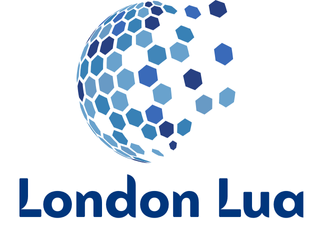Understanding donor behavior is key for UK non-profits aiming to maximize their impact. Machine learning offers powerful tools for effective segmentation, enabling targeted campaigns and personalized engagement. This guide will explore how non-profits can unlock valuable insights about their donors. By harnessing technology, organizations can not only refine their strategies but also cultivate stronger relationships, leading to increased support and engagement. Discover practical steps to implement machine learning in your donor segmentation strategy and drive your mission forward.
Understanding Machine Learning in Donor Segmentation
Machine learning is transforming how non-profits approach donor segmentation. By leveraging data, machine learning algorithms can identify patterns and trends that are not immediately obvious. This enables non-profits to gain deeper insights into donor behaviour and preferences, which is crucial for crafting effective fundraising strategies.
Topic to read : Top Strategies to Strengthen Cloud Security for UK Businesses
Donor segmentation involves categorising donors into groups based on shared characteristics. This allows for targeted communication and personalised engagement, increasing the likelihood of donations. Machine learning enhances this process by analysing vast amounts of data swiftly and accurately, identifying segments that might be overlooked through manual methods.
The benefits of utilising machine learning in non-profit analytics are manifold. Firstly, it improves the precision of donor insights, allowing organisations to tailor their approaches to different donor segments. Secondly, it saves time and resources by automating the segmentation process, freeing up staff to focus on strategic initiatives. Lastly, it provides a competitive edge in fundraising efforts, as organisations can more effectively engage with their donor base.
In parallel : Unlocking Personalized Travel: How UK Travel Agencies Can Leverage Geolocation Data to Enhance Your Journey
Incorporating machine learning into donor segmentation strategies not only optimises fundraising efforts but also fosters stronger relationships with donors, ultimately supporting the non-profit's mission.
Case Studies of UK Non-Profits Utilizing Machine Learning
Exploring how UK non-profits are harnessing machine learning provides valuable insights into effective donor segmentation strategies. These organisations have successfully integrated advanced technologies to enhance their fundraising efforts. By examining these case studies, we can uncover the specific techniques that have contributed to their success.
One notable example is a UK-based charity that implemented machine learning to refine its donor segmentation. This non-profit analysed donor data to identify patterns and preferences, allowing them to craft personalised communication strategies. The result was a significant increase in donor engagement and retention, showcasing the power of tailored approaches.
Another non-profit focused on utilising machine learning algorithms to predict donor behaviour. By analysing historical donation data, they could forecast future contributions, enabling more accurate budget planning and strategic decision-making. This predictive capability provided a competitive edge in their fundraising efforts.
These successful strategies demonstrate the transformative impact of machine learning on non-profit operations. The insights gained from these case studies highlight the importance of data-driven approaches in enhancing donor relationships and optimising fundraising outcomes. As more UK non-profits adopt these technologies, the potential for innovation in the sector continues to grow, ultimately supporting their missions more effectively.
Step-by-Step Guide for Analyzing Donor Data
Embarking on a donor data analysis journey requires careful planning and execution. Here's a step-by-step guide to help non-profits harness the power of machine learning for effective donor segmentation.
Initial Considerations for Data Collection and Preparation
Before diving into analysis, ensure your donor data is comprehensive and well-organised. Collect data from various sources, such as donation history, engagement metrics, and demographic information. Clean and preprocess this data to eliminate inaccuracies and standardise formats, ensuring a solid foundation for analysis.
Methodologies for Analyzing Donor Data Using Machine Learning
Utilise machine learning algorithms to uncover patterns and trends within your donor data. Techniques like clustering can group donors based on shared characteristics, while classification algorithms can predict future behaviours. Choose methodologies that align with your organisation's goals and data characteristics for optimal results.
Interpreting Results and Translating Them into Actionable Insights
Once analysis is complete, focus on interpreting the results to derive actionable insights. Identify key donor segments and tailor communication strategies to each group. Use insights to enhance engagement, personalise outreach, and ultimately boost donation rates. Regularly review and adjust strategies based on new data and insights to maintain effectiveness.
Recommended Tools and Software for Machine Learning
When it comes to enhancing donor segmentation through machine learning, selecting the right data analysis tools and machine learning software is crucial for non-profits. These tools not only streamline the analysis process but also provide actionable insights that can significantly boost fundraising efforts.
Several popular machine learning tools are well-suited for non-profits. Google Cloud AI and Microsoft Azure Machine Learning offer robust platforms with extensive features for data analysis. These tools allow for easy integration and scalability, making them ideal for organisations of different sizes. IBM Watson Studio is another excellent option, known for its user-friendly interface and comprehensive analytics capabilities.
When comparing features and pricing, it's essential to consider the specific needs of your organisation. While some platforms offer free tiers, others may require a subscription. Google Cloud AI, for instance, provides a pay-as-you-go model, which can be cost-effective for smaller non-profits.
Integrating these tools into existing systems requires careful planning. Start by assessing current infrastructure and identifying areas for improvement. Training staff to use these tools effectively is also crucial. By leveraging the right resources, non-profits can harness the full potential of machine learning to enhance their donor engagement strategies.
Best Practices for Effective Donor Segmentation
Implementing robust donor segmentation strategies is pivotal for successful fundraising. By developing detailed donor personas, non-profits can tailor their engagement efforts. Start by analysing insights from donor behaviour, preferences, and demographics. This enables the creation of personas that reflect the diverse motivations and interests within your donor base.
Regularly updating and maintaining donor segments is crucial. Use dynamic data to keep segments relevant and reflective of current donor profiles. This involves periodic reviews and adjustments to ensure your donor segmentation strategies remain effective. Consistent updates help in aligning communication and engagement tactics with evolving donor expectations.
Ethical considerations in data handling are paramount. Ensure compliance with data protection regulations and maintain transparency with donors about how their data is used. Ethical data practices build trust, which is essential for long-term donor relationships. Prioritising privacy and consent not only safeguards your organisation but also enhances its reputation.
By adhering to these best practices, non-profits can enhance their fundraising efforts and foster deeper connections with donors. This strategic approach not only optimises resource allocation but also maximises the impact of personalised donor engagement.
Challenges and Solutions in Implementing Machine Learning
Implementing machine learning in non-profits presents unique implementation challenges. One common obstacle is the lack of technical expertise within the organisation. Non-profits often struggle to find staff skilled in data science, which can hinder the integration of machine learning solutions. Additionally, limited budgets can restrict access to necessary technology and resources, making it difficult to adopt advanced tools.
To overcome these challenges, non-profits can explore several practical solutions. Partnering with tech companies or universities can provide access to expertise and resources at a reduced cost. Investing in training programs for existing staff can also build internal capacity, ensuring the organisation can effectively manage machine learning projects.
Successful case examples illustrate how these strategies can be implemented. For instance, a non-profit collaborated with a local university, leveraging student talent and faculty expertise to develop a machine learning model. This partnership not only reduced costs but also provided valuable learning opportunities for both parties.
By addressing these non-profit obstacles through strategic partnerships and training, organisations can harness the power of machine learning to enhance their operations and achieve their mission more effectively.
Future Trends in Donor Insights and Machine Learning
As machine learning continues to evolve, emerging trends in non-profit fundraising are reshaping the landscape. One significant advancement is the integration of artificial intelligence to refine donor insights. AI-driven tools are becoming more sophisticated, enabling non-profits to predict donor behaviour with unprecedented accuracy. This precision aids in crafting highly personalised engagement strategies, ultimately boosting donation rates.
In the coming years, machine learning advancements will likely focus on real-time data analysis. Non-profits will have the capability to adjust their strategies on-the-fly based on live donor interactions. This dynamic approach ensures that organisations remain agile and responsive to donor needs, enhancing overall engagement.
To prepare for these future trends, non-profits should invest in scalable technology solutions and continuous staff training. Embracing cloud-based platforms can offer the flexibility needed to adapt to technological changes. Additionally, fostering a culture of innovation within the organisation will be crucial. By encouraging experimentation and staying informed about advancements, non-profits can maintain a competitive edge.
As donor insights become increasingly data-driven, understanding and leveraging these trends will be essential for non-profits aiming to optimise their fundraising efforts and strengthen donor relationships.











